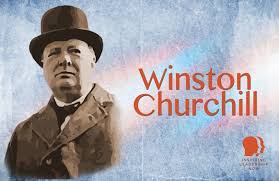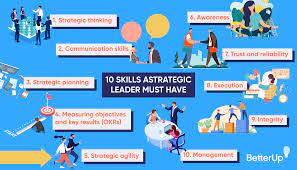12 Leadership Lessons from History’s Greatest Leaders
Throughout history, there have been many great leaders who have faced challenges and conquered them. In doing so, they have developed strong leadership teams that have helped them achieve their goals. Here are 12 leadership lessons from some of history’s greatest leaders:
1. Nelson Mandela – Lead by Example
As one of the world’s most respected leaders, Nelson Mandela is a powerful example of leading by example. He spent 27 years in prison for his beliefs, yet never wavered in his commitment to his cause. After being released, he continued to fight for equality and justice, eventually becoming the first black president of South Africa. His leadership and determination inspired others to follow his lead and continue the fight for freedom.
2. Mahatma Gandhi – Be Willing to sacrifice
Mahatma Gandhi is another excellent example of a leader who was willing to sacrifice everything for his beliefs. He dedicated his life to India’s independence and fought tirelessly against British rule. He believed in nonviolent resistance and led by example, often putting himself in harm’s way. His selflessness and dedication inspired others to join the cause and eventually led to India’s independence.
3. Martin Luther King Jr. – Have a Vision
Martin Luther King Jr.’s vision for America was one of equality and justice for all people, regardless of race or color. He fought tirelessly for this vision, even in the face of danger and opposition. His famous “I Have a Dream” speech is an excellent example of
participative leadership style
In the business world, the most successful leaders are those who have a participative leadership style. This type of leader encourages employees to be active participants in the decision-making process, and he or she values the input of others.
The participative style of leadership has been shown to be effective in a variety of settings, and it is frequently used by CEOs and other high-level executives. In fact, research has shown that participative leadership is associated with increased employee satisfaction and commitment, as well as higher levels of productivity.
If you’re looking to adopt a participative leadership style, there are a few things you should keep in mind. First, it’s important to create an environment in which employees feel comfortable sharing their ideas and opinions. Second, you need to be open to hearing feedback from others, even if it isn’t always positive. Lastly, it’s essential to make decisions that take into account the input of all involved parties.
By following these tips, you can develop a participative leadership style that will help you achieve success in your career.
The participative leadership style is one of the most effective ways to lead.
This style of leadership involves all members of the team in the decision-making process. This ensures that everyone feels like they are a part of the team and invested in its success. This leader also takes input from others and uses it to make decisions that will benefit the team as a whole.
The participative leadership style is especially effective in times of change. When there is uncertainty, this leader can help guide the team through it by involving them in the decision-making process. This way, everyone feels like they have a say in how things are done and are more likely to buy into any changes that need to be made.
This style of leadership encourages participation from all members of the team.

It also allows for different perspectives to be heard, and for creative solutions to be found.
The leader in this style of leadership is not the only one with the answers but is instead someone who facilitates discussion and encourages others to share their ideas.
This style of leadership can be very effective in teams where there is a wealth of knowledge and experience to draw from.
This type of leadership results in a more cohesive and effective team.
In this type of leadership, the leader takes on more of a coaching role, rather than a dictatorial one. The leader works with the team to help them identify their strengths and weaknesses and then coaches them to improve in areas where they are weak. This type of leadership results in a more cohesive and effective team.
The participative leadership style has been used by some of history’s greatest leaders.
This leadership style is based on the belief that the best way to lead is by involving others in the decision-making process. This allows for greater buy-in from team members and can result in more creative solutions.
Some of the most famous leaders who have used this style include Mahatma Gandhi, Nelson Mandela, and Martin Luther King Jr. Each of these leaders was able to rally people to their cause and create lasting change.
If you are looking to use participative leadership, it is important to ensure that everyone feels like they have a voice in the decision-making process. This means creating an open environment where people feel comfortable sharing their ideas. It is also important to be clear about what the goal is and why it is important. With a shared vision and purpose, participative leadership can be an incredibly powerful tool.
This style of leadership can be used in any situation, whether it be business, government, or any other organization.
There are many advantages to using this style of leadership. One advantage is that it allows for a more democratic decision-making process. This can lead to better decisions being made, as all voices are heard and considered.
Another advantage is that it can help to build trust within an organization. When people feel like they have a say in what happens, they are more likely to be committed and invested in the success of the organization.
There are also some challenges associated with this style of leadership. One challenge is that it can take longer to reach a decision, as everyone needs to be consulted. Another challenge is that not everyone may be comfortable with sharing their opinion or having their ideas critiqued by others.
aspen leadership group
The Aspen Leadership Group is a nonprofit organization that works to develop leaders and advance leadership thinking. They offer programs and resources on a variety of topics related to leadership development.
In their work with leaders, the Aspen Leadership Group has identified 12 key lessons that can be learned from history’s greatest leaders. These lessons are:
1. Leaders must have a clear vision for what they want to achieve.
2. Leaders must be able to articulate their vision in a way that inspires others.
3. Leaders must be passionate about their cause and believe in what they are doing.
4. Leaders must be willing to take risks and make sacrifices for their cause.
5. Leaders must be able to build strong relationships with others.
6. Leaders must be good communicators and be able to listen to others.
7. Leaders must be able to motivate and inspire others to action.
8. Leaders must be able to make tough decisions and stand by them.
9. Leaders must be willing to learn from their mistakes and grow from them.
10. Leaders must be humble and always open to new ideas.
11. Leaders must have integrity and always do what is right, even when it is difficult.






